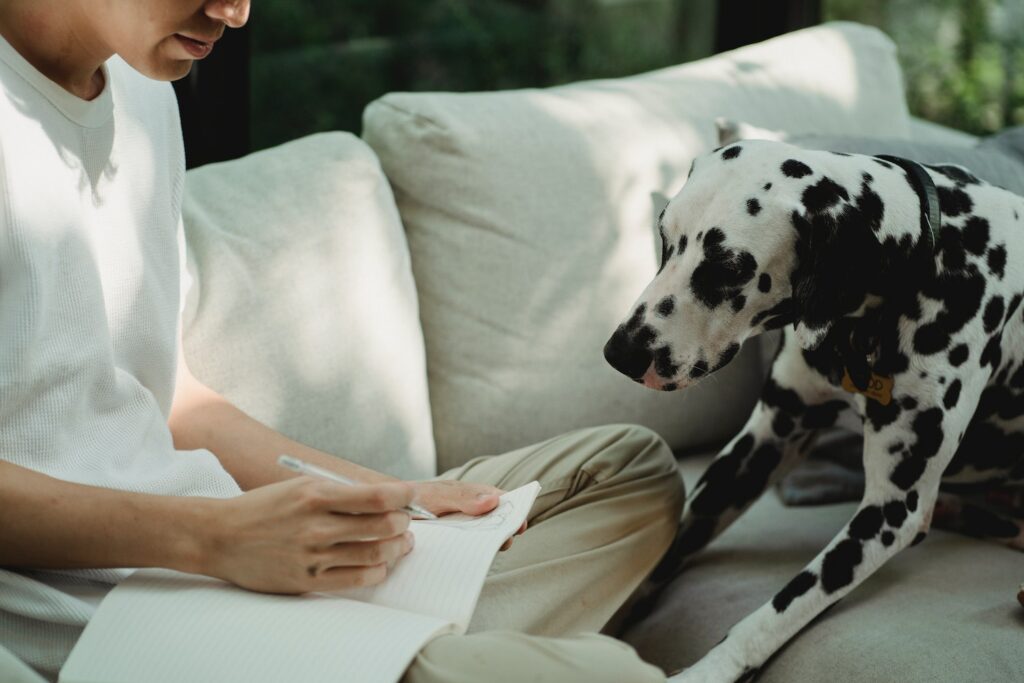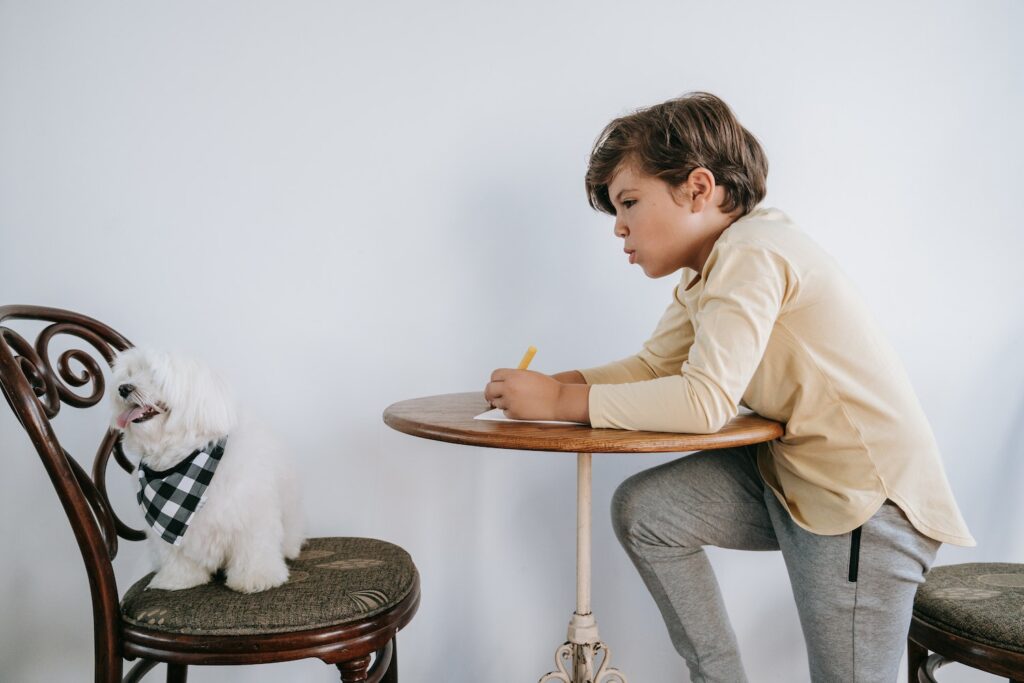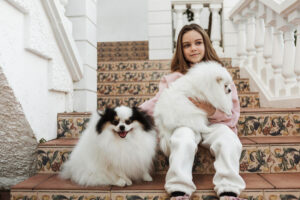Welcome to our guide on how to draw a dog! Whether you’re an aspiring artist or just looking for a fun way to express your creativity, learning how to capture the essence of man’s best friend on paper is a skill worth mastering. From their wagging tails and floppy ears to their playful personalities, dogs are truly captivating creatures.
In this step-by-step article, we’ll walk you through the process of drawing a dog from start to finish. So grab your pencils, gather your artistic spirit, and let’s dive into the world of canine artistry together!
What supplies do you need?
When it comes to drawing a dog, having the right supplies is essential. Here are the must-have items that will help bring your furry friend to life on paper.
First and foremost, you’ll need a good-quality sketchbook or drawing paper. Opt for something with a smooth surface that can handle various drawing techniques. As for pencils, a set of graphite pencils ranging from HB to 6B will give you the versatility needed to achieve different shades and textures.
To add depth and dimension to your drawings, grab some blending tools like tortillons or blending stumps. These handy little tools help smudge and blend pencil strokes seamlessly for a more realistic look.
Next up, erasers! Don’t underestimate the power of an effective eraser in refining your artwork. A kneaded eraser is great for lifting off excess graphite or creating highlights, while a precision eraser pen allows you to erase fine details with ease.
Don’t forget about ink pens as well! They come in handy when adding bold lines or intricate patterns to enhance your dog’s features. Experiment with different nib sizes until you find one that suits your style.
Consider investing in colored pencils if you want to add vibrant hues and create lifelike fur textures. With these versatile tools at hand, you’ll be able to explore endless possibilities in bringing out the true character of each unique dog breed.
Now that we’ve covered all the necessary supplies let’s move on to capturing the essence of our furry friends by sketching their adorable faces!
Sketching the Dog’s Face
When it comes to drawing a dog, the first step is sketching its face. This is where you can capture the essence and personality of your furry friend. Start by lightly outlining the basic shapes – a circle for the head and an oval for the snout.
Next, focus on adding details to bring your dog’s face to life. Begin with the eyes; they say that eyes are windows to the soul, so make sure you give them plenty of expression! Use small ovals or circles for the pupils and add some shine to create a realistic look.
Don’t forget about those adorable floppy ears that dogs are known for! Depending on the breed, ears can come in many shapes and sizes. Take your time observing reference images if needed, and remember that practice makes perfect.
Once you have sketched out these key features, start working on defining other facial elements such as the nose and mouth. Pay close attention to proportions as this will determine how accurate your drawing looks.
Remember, every dog has unique markings or fur patterns that make them special. Don’t be afraid to experiment with different textures or shading techniques when drawing their coat – this will add depth and dimension.
To truly capture a dog’s likeness in your artwork, take note of their expressions – whether it’s perky ears or a cheeky grin – these subtle details can make all difference!
Keep practicing sketching faces until you feel confident enough before moving on to other parts of your body.
Drawing the Dog’s Ears
Now that you’ve sketched out the dog’s face, it’s time to add those adorable ears! The shape and position of a dog’s ears can vary depending on their breed, so take a moment to observe your reference photo or imagine the type of dog you want to draw.
Start by lightly sketching the basic shape of each ear. Are they floppy or pointed? Big or small? Remember, this is just a guideline, so don’t worry about being too precise at this stage.
Next, start adding some details. Pay attention to how the fur flows around the base of the ear and try to capture that in your drawing. Are there any tufts of fur sticking out? Don’t be afraid to exaggerate them slightly for added realism.
As you refine your drawing, remember that each ear should mirror one another. Take note of their proportion and angle compared to the rest of the head. This will help create balance and harmony within your artwork.
Use shading techniques such as hatching or cross-hatching to give depth and dimensionality to your dog’s ears. Think about where light would hit them and where shadows would naturally fall.
Remember, practice makes perfect! Don’t get discouraged if your first few attempts are not exactly what you envisioned. Keep refining your technique and soon enough you’ll be drawing realistic canine ears like a pro!
Stay tuned for our next section where we’ll dive into constructing the dog’s body – an essential step in bringing our furry friend to life on paper!
Constructing the Dog’s Body
Now that you have sketched out the face and ears of your dog, it’s time to move on to construct its body. This is where you can bring your drawing to life! Start by outlining the basic shape of the body using simple curved lines. Remember, dogs come in all shapes and sizes, so feel free to get creative with this step.
Next, add in some details like legs and a tail. Study reference images or observe real dogs to ensure accuracy in your proportions. Dogs have different breeds, so take note of specific characteristics such as long or short hair, muscular build, or floppy ears.

Once you have drawn the basic outline of the body and added in those important features, start adding fur texture by lightly shading areas where shadows would naturally fall. Use short strokes to mimic fur strands and create volume.
Continue refining your drawing by adding depth and dimension through shading techniques. Pay attention to highlights and shadows on different parts of the dog’s body – this will help make it look more realistic.
Keep Reading: https://dogpets.org/dog/why-do-dogs-howl-at-sirens/
Remember that practice makes perfect when it comes to drawing animals like dogs. Don’t be discouraged if your first attempts don’t turn out exactly how you envisioned them – keep practicing! With time and dedication, you’ll improve your skills immensely.
Drawing a dog may seem challenging at first but with patience and practice anyone can do it! So grab your pencil and paper, follow these steps for constructing the dog’s body, and let your creativity shine through as you bring man’s best friend onto paper!
Adding the Final Details
Now that you have sketched out the basic shape of your dog and added in all the necessary features, it’s time to add those final details that will bring your drawing to life. Paying attention to these small nuances can make a big difference in capturing the essence of a dog’s appearance.
Start by adding texture and shading to give depth and dimension to your drawing. Observe how light falls on different areas of the dog’s body and use short, controlled strokes with your pencil or pen to create realistic fur. Remember that fur is not uniform – it has variations in length, direction, and color.
Next, focus on refining the facial features. Use smaller lines or dots for things like whiskers or freckles around the nose. Don’t forget about the eyes – they are often said to be windows into a dog’s soul! Add highlights using a white pencil or ink gel pens to make them appear shiny and alive.
Pay attention to any unique markings or patterns on your chosen breed of dog. Whether it’s spots, patches, or stripes, accurately replicating these distinguishing characteristics will help make your drawing more recognizable as a specific breed.
Take a step back and evaluate your work so far. Are there any areas that need tweaking? Do certain parts stand out more than others? Make any necessary adjustments until you’re satisfied with how everything looks as a whole.
Remember, practice makes perfect when it comes to drawing dogs (or anything else). With each attempt, you’ll become more familiar with their anatomy and develop your style along the way!
So go ahead, grab those pencils or pens again, and keep honing this skill – soon enough you’ll be able to draw dogs effortlessly!
Conclusion:
Drawing a dog can be a fun and rewarding activity for both beginners and experienced artists. By following the steps outlined in this guide, you can create your own unique and adorable canine masterpiece. Remember to have patience, practice regularly, and most importantly, enjoy the process.
So grab your drawing supplies, and start sketching those faces with their expressive eyes and floppy ears. Construct the body with graceful curves or strong lines that capture the essence of your chosen breed. And don’t forget those final details that bring your drawing to life.
Whether you’re looking to create realistic portraits or cute cartoons, mastering how to draw a dog is an invaluable skill that will allow you to express yourself creatively. So go ahead and unleash your artistic talent – let’s see what amazing dogs you can create on paper!


